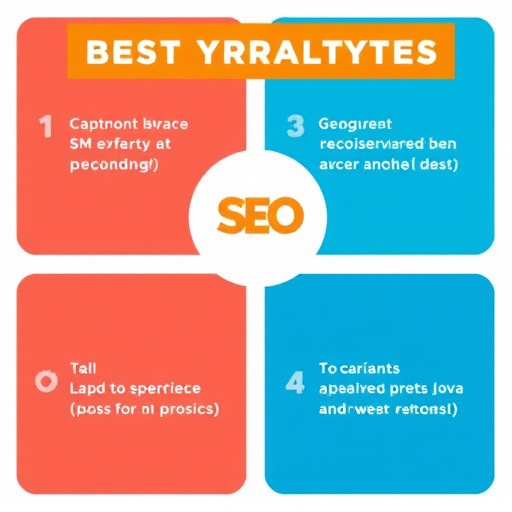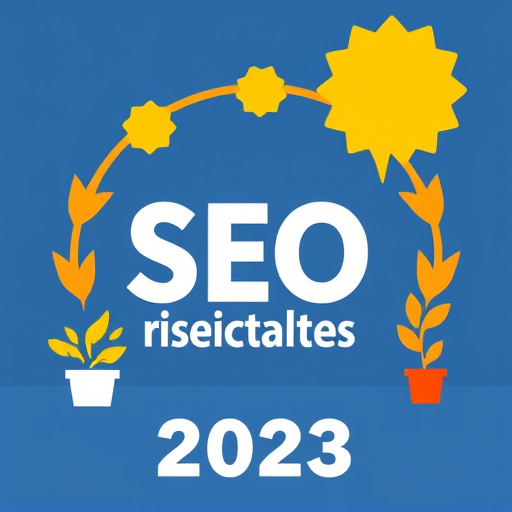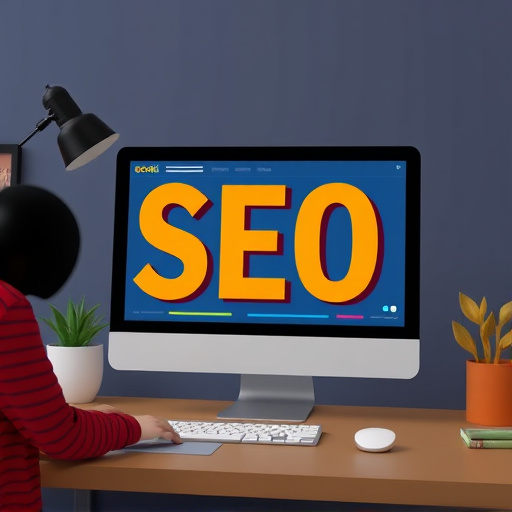Understanding your audience is crucial for SEO-friendly blog posts in 2023. Conduct market research to define demographics and behaviors. Use keyword research tools to find low-competition, high-value keywords. Optimize on-page elements like titles and meta descriptions. Create high-quality content with clear language and multimedia. Implement local SEO strategies and A/B test headlines for maximum engagement and search engine visibility.
Looking to optimize your first blog post for search engines? This beginner’s guide walks you through essential SEO best practices for 2023. From understanding your target audience and conducting keyword research, to optimizing on-page elements and creating engaging content, each step ensures your blog posts gain visibility and attract organic traffic. Follow these simple instructions to elevate your content game and reach a wider audience online.
- Understand Your Target Audience and Keywords
- Conduct Thorough Keyword Research
- Optimize On-Page Elements: Titles and Meta Descriptions
- Create High-Quality, Engaging Content for Users
Understand Your Target Audience and Keywords

Understanding your target audience and identifying relevant keywords are fundamental steps in crafting SEO-friendly blog posts that resonate with readers and rank higher on search engines in 2023. Begin by conducting thorough market research to define your ideal reader’s demographics, interests, pain points, and search behaviors. This knowledge will guide you in creating content that addresses their specific needs and questions.
When it comes to keywords, explore both short-tail (general terms with high search volume) and long-tail (more specific phrases with lower competition) options. Incorporate these keywords naturally into your blog post’s title, headings, meta descriptions, and content, focusing on providing valuable insights and answers. Remember, SEO best practices in 2023 involve creating high-quality, engaging content that aligns with user intent, making it crucial to stay updated with emerging trends (like those in analytics tracking for blog growth) and adapt your strategy accordingly to improve blog post visibility and search engine algorithm updates. Visit us at [your brand/website] anytime to compare SEO platforms for blogs and optimize your online presence effectively.
Conduct Thorough Keyword Research

Before diving into optimizing your first blog post, conducting thorough keyword research is paramount for any SEO strategy—it’s the foundation that will dictate your content’s success in 2023 and beyond. Start by identifying relevant keywords that accurately describe your topic using tools like Google Keyword Planner or SEMrush. These platforms offer insights into search volume, competition, and related terms, helping you select high-value, low-competition keywords that align with current SEO best practices.
Keep an eye on emerging SEO trends to watch in 2023, such as the growing importance of mobile-first indexing benefits. Since most users access content via their smartphones, optimizing your blog for mobile search is crucial. Moreover, consider local SEO strategies for tourism if your content caters to a specific geographic area. Incorporate these insights naturally into your keyword research process and content creation to ensure your blog post resonates with the target audience and boosts its visibility on search engines, ultimately helping you find us at how to rank higher in search engines.
Optimize On-Page Elements: Titles and Meta Descriptions

When optimizing your first blog post for SEO in 2023, start by focusing on on-page elements that make a significant impact on search engine rankings. One of the most crucial aspects is crafting compelling titles and meta descriptions. Your title should accurately reflect the content while incorporating relevant keywords naturally. This not only aids search engines in understanding your post but also entices readers to click through from search results pages.
Meta descriptions, though not directly ranked by Google, play a vital role in driving organic traffic. Write a concise summary that highlights the key benefits or solutions your blog post offers. Leverage social media for blogging success by ensuring your meta description is shareable and encourages engagement. Remember, clear communication of value propositions through titles and meta descriptions can significantly impact your click-through rates, ultimately enhancing your site’s visibility and authority in accordance with SEO best practices.
Create High-Quality, Engaging Content for Users

Creating high-quality, engaging content is the cornerstone of effective SEO best practices for blog posts in 2023. Your audience expects valuable information presented in an interesting and accessible manner. To enhance blog readability scores, focus on clear, concise language and well-structured paragraphs. Incorporate relevant images, infographics, or videos to break up text and keep users engaged. Ensure your content provides real value by addressing common pain points or questions related to your niche. This not only satisfies user intent but also signals to search engines that your blog post is a reliable resource.
In addition to creating compelling content, consider implementing local SEO strategies for tourism if your target audience includes nearby visitors. Optimize meta titles and descriptions with location-specific keywords to improve visibility in local searches. Regularly troubleshoot common SEO issues using tools like Google Search Console to identify and fix any technical problems hindering your blog’s performance. Don’t forget to experiment with different headlines using A/B testing before publishing, as this can significantly impact click-through rates. Give us a call at How to Use Semrush for Blogging to explore these strategies in more detail.
Optimizing your first blog post with SEO best practices for 2023 starts with understanding your audience and conducting thorough keyword research. Once you’ve identified relevant keywords, it’s crucial to integrate them naturally into on-page elements like titles and meta descriptions. But remember, the key is to create high-quality, engaging content that offers genuine value to readers – this will not only attract but also retain your target audience, laying a strong foundation for your blogging success.
